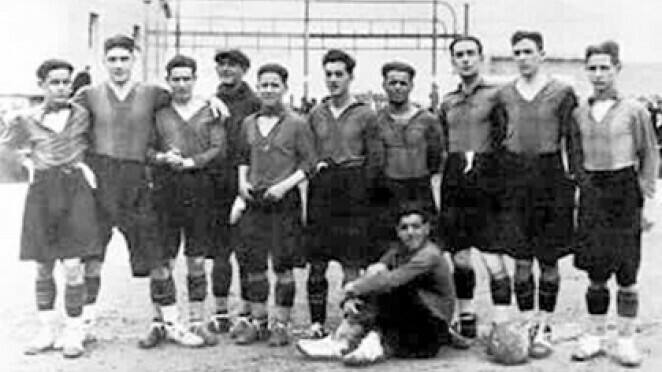THE BIRTH (1926-1933)

As the beginning of the Campeonato Nacional de Liga seemed to be imminent (though it did not take off until the 1928-1929 season due to the fact that there were endless discussions about the number of football clubs to be included and it was not easy for them to reach an agreement), the talks about the union of the main teams from Oviedo were intensified. The main aim was to establish a football club powerful enough so as to meet the standards of the increasingly competitive squads, the new league championship and the dawn of professional football in Spain. It was clear for both Stadium and Deportivo that they would not make it to the top flight if they went on their separate ways.
The key figure in this process was Stadium goalkeeper Óscar Álvarez, who strongly supported the merger, by getting the interim committees -which had been set up to stand for both clubs- to reach the basis for an agreement on that issue. After having been approved by the assemblies of both clubs, that joined decision made it possible for their representatives to sign the founding act for a new club which was born under the name of Real Oviedo Foot-ball Club in the evening of Friday, 26th March 1926. The symbols for this new club were the ones of the City of Oviedo : the blue colour and the Cross of the Angels.
Carlos Tartiere, who was the chairman of the new football club from the very first day, was determined to catch up with the new footballing times in Spain, an activity which was becoming more and more popular.
On 1st May 1926 Real Oviedo played its first game ever, it was a match against Arenas de Guecho where Justo scored the first ever goal for Real Oviedo.
When in the season 1928-1929 the Spanish League Championship was finally established, Real Oviedo started in the Second Division, after beating Iberia from Zaragoza but losing to Real Betis in extra time during the play-off to get a place in the top-flight of Spanish football.
Battling against Sporting Gijón to get hold of the supremacy in Asturian football, Real Oviedo went on to become champions in the regional championship while attempting to promote to First Division,. This remarkable feat was achieved in the 1932-1933 season, becoming champions after beating runners-up Atlético Madrid 5-1 at Buenavista Stadium in a crucial match on 19th March 1933. A brand new state-of-the-art stadium which had substituted Teatinos after having been opened with a match between the Spanish national side and the Yugoslavian one on 24th April 1932. That afternoon, Real Oviedo striker Isidro Lángara made his debut for the national squad and scored the first goal ever at Buenavista. Its most prominent architectural landmark was a 100-metre-long terrace whose roof did not have any columns which allowed the supporters to watch the game without any visual obstacle.
The promotion attacking line-up, made up by Casuco, Gallart, Lángara, Galé and Inciarte, was named as the ‘electric attack’ due to their scoring prowess, something which became usual in the seasons to come, already in the top flight of Spanish football